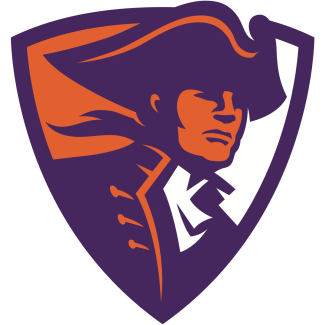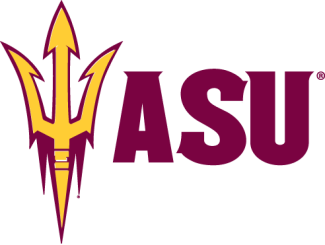1. Salisbury
Jim Berkman said 2018’s version of the Sea Gulls was one of his favorite years coaching, largely because of how green they were. They were denied the chance of a three-peat by Wesleyan, but the pieces that return make them early favorites for next spring. Their starting attack – Pierre Armstrong, Josh Melton and Griffin Moroney – will all be juniors, while standout midfielders Corey Gwin and Zach Pompea will be seniors. Plus, Salisbury’s two faceoff guys return, as does goalie Brandon Warren. The Sea Gulls’ depth is perhaps unparalleled in Division III, so the only question is how they’ll replace All-Americans Kyle Tucker and Will Nowesnick down on defense. If that’s sorted out early, the Sea Gulls should be a force to be reckoned with.
2. Gettysburg
After winning the Centennial Conference and advancing to the final four, the benchmark for success is set high for the Bullets. Five of their seven All-Americans return, and the only true question is how they’ll replace four-year starter Tim Brady in goal. Outside of that, their top eight point scorers from 2018 are back, as is reigning CC Defensive Player of the Year Mitch Wykoff. Plus, with wins this past season over Salisbury, York and Dickinson, Gettysburg has shown it can hang with Division III’s best. The Bullets have made the final four eight times, so could 2019 mark the program’s first-ever national title? We’ll see.
3. RIT
The Tigers have made two straight national semifinals, so there’s a high standard to match in upstate New York. Despite some serious losses to graduation – attackman Kyle Killen, long-stick midfielder Eli Salama and faceoff specialist Nate Farrell were all given USILA individual awards – RIT has a knack for reinventing itself. One to keep an eye out for is Shawn Nally, a rising senior who was given the Fran McCall Award as the most outstanding midfielder in Division III. Another noteworthy returner is first-team All-American Alex Maruna on defense. If the aforementioned holes can be filled, look for the Tigers to again navigate the Liberty League with ease and be a force come the NCAA tournament.
4. Tufts
Under coach Casey D’Annolfo, the Jumbos have now fallen to NESCAC rival Wesleyan the past two seasons in the NCAA tournament. But the Jumbos, national title winners in 2010, 2015, and 2016, return all but three of their key starters from 2018. That makes them favorites in the NESCAC, and a program that surely has its sights set on making it four national titles this decade. Down on attack, Tufts will look to 80-plus point scorers Danny Murphy and Ben Connelly, and its starting faceoff specialist (Henry Hollen) and goalie (Mason Pollack) are both back as well. Continuity goes a long way in collegiate athletics, and the Jumbos will have a heavy dose of that next spring.
5. Wesleyan
The Cardinals, fresh off winning their first national title in program history, will look to some new faces next season. Of their nine All-Americans from 2018, six have graduated, including first-line middie Taylor Ghesquiere, all-time goal scoring leader Harry Stanton and defenseman Andres Rodriguez, who head coach John Raba called arguably the best player in Division III. Wesleyan will lean upon Carter Hawthorne and Ronan Jacoby on attack, though the quest for a repeat and NESCAC supremacy is certainly not a given. Otto Bohan, a rising junior, will be relied upon even more in goal.
6. York
The Spartans hovered around the top five all throughout 2018, and they’ll likely land near there again in 2019. They represent the Capital Athletic Conference’s elite alongside Salisbury, and it helps mightily that their top three scorers will be back in action. That’s Thomas Pfeiffer, Hunter Davis and Jake Hvazda, who combined for 41 percent of their total points this past spring. One downside is they’ve graduated four of seven USILA All-Americans, and have several holes to fill on defense. Namely, there’s goalie Landry Marshall (54.4 save percentage) and shutdown defender Joey Fiorino (72 career caused turnovers). Find answers there, get attackman Brendan McGrath back from an ACL tear, and York is ripe for a strong season.
7. Amherst
The Mammoths’ 2018 postseason run ended in disappointment, but they’re likely to again challenge for the NESCAC title, or even more. Nine of their top 10 scorers are back, including rising senior Evan Wolf, the reigning NESCAC Player of the Year. Wolf nearly doubled his previous career high in 2018, putting up 84 points from 53 goals and 31 assists. On top of that, five of Amherst’s six All-Americans are back, with faceoff specialist Dylan Finazzo one to watch closely. His 68.5 winning percentage was among the nation’s best. Returning attackman Cam Minicus will be fresh off a 94-point campaign, good for third most in the NESCAC. Amherst could make some serious noise next year.
8. Denison
The Big Red routinely are one of the North Coast Athletic Conference’s best teams – they’ve won the regular season title six times this decade – and 2019 should be no different. Fourteen of their top 15 scorers from this past season return, including Peter Pittroff, the reigning NCAC Offensive Player of the Year and a second-team All-American. Henry DeCamp, the reigning NCAC Faceoff Specialist of the Year, is also back, as is a rotating cast of goalkeepers. Look for someone to make the starting job their own there. Denison has some holes to fill on defense, namely the loss of three-time All-American Ben Duhoski, but it should reload just fine.
9. Cabrini
The Cavaliers return their top 12 scorers from this past season, or nearly 85 percent of their total points. With that type of firepower, it’s no secret as to why head coach Steve Colfer has cemented Cabrini as the elite program in the Colonial States Athletic Conference. All eyes, however, will be on the attack trio of Jordan Krug, Matt LoParo and Timmy Brooks, all All-Americans. To firmly enter the conversation for championship weekend, Cabrini will need to show that it can consistently compete against top-level non-conference opponents. It did that somewhat in 2018, beating Dickinson and Ohio Wesleyan, so the signs are there.
10. Ohio Wesleyan
While so much attention goes to the NESCAC and Mid-Atlantic hotbeds in Division III, the Battling Bishops have quietly been one of the country’s most consistent programs. In 2018, they won their fourthNorth Coast Athletic Conference title of this decade, so they’ll have a target on their backs in 2019, with Denison namely gunning for them. Their offense can rest easy knowing that All-American attackmen Steven Hildebrand and Max Tennant are back with a combined 183 points. Some question marks exist on defense, though, with three All-Americans lost to graduation, setting back a unit that allowed 7.74 goals per game. Figure out the back end, and Ohio Wesleyan should keep in and around the top 10.\
In the conversation: Dickinson, Stevens, Christopher Newport, Roanoke, Cortland


























































